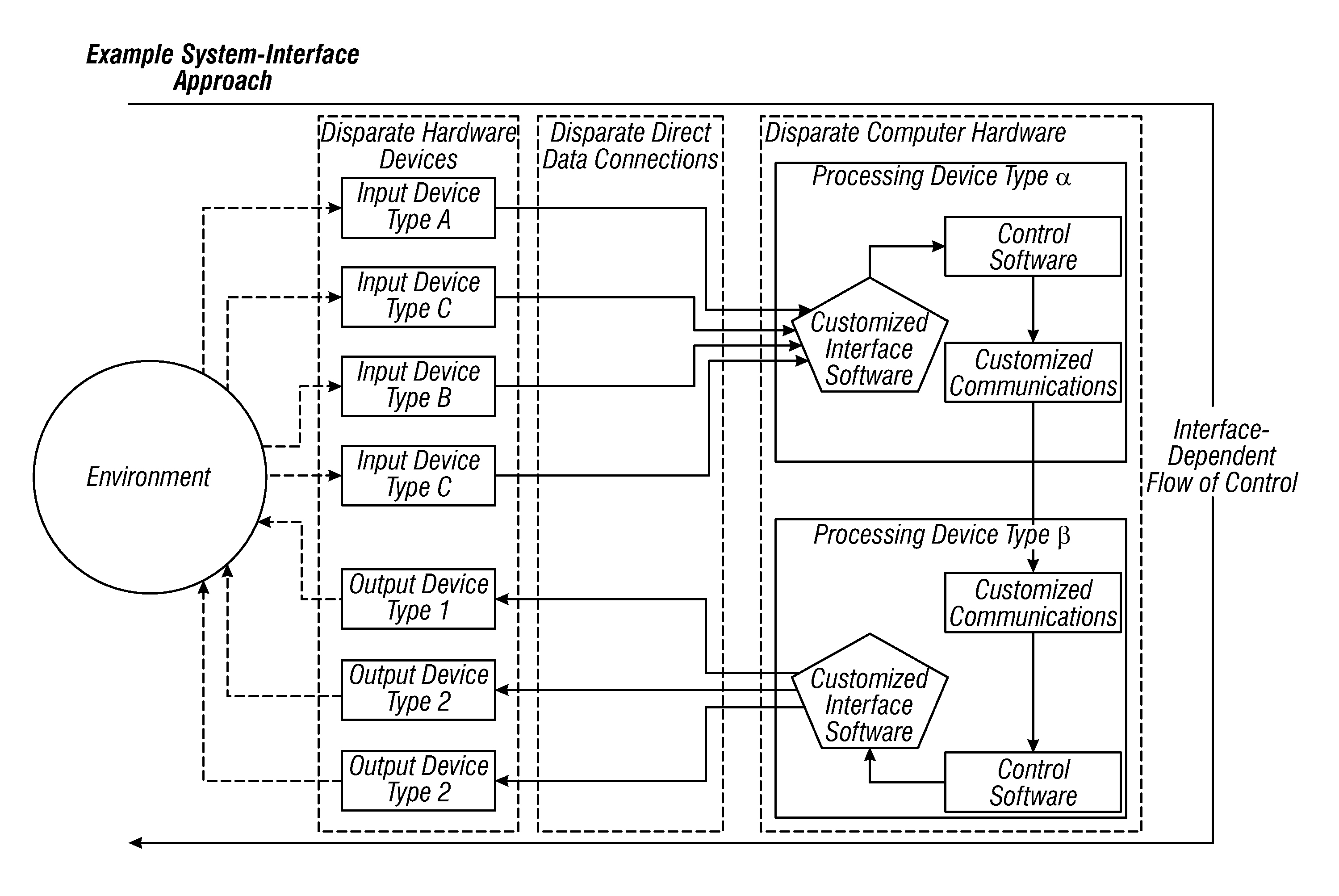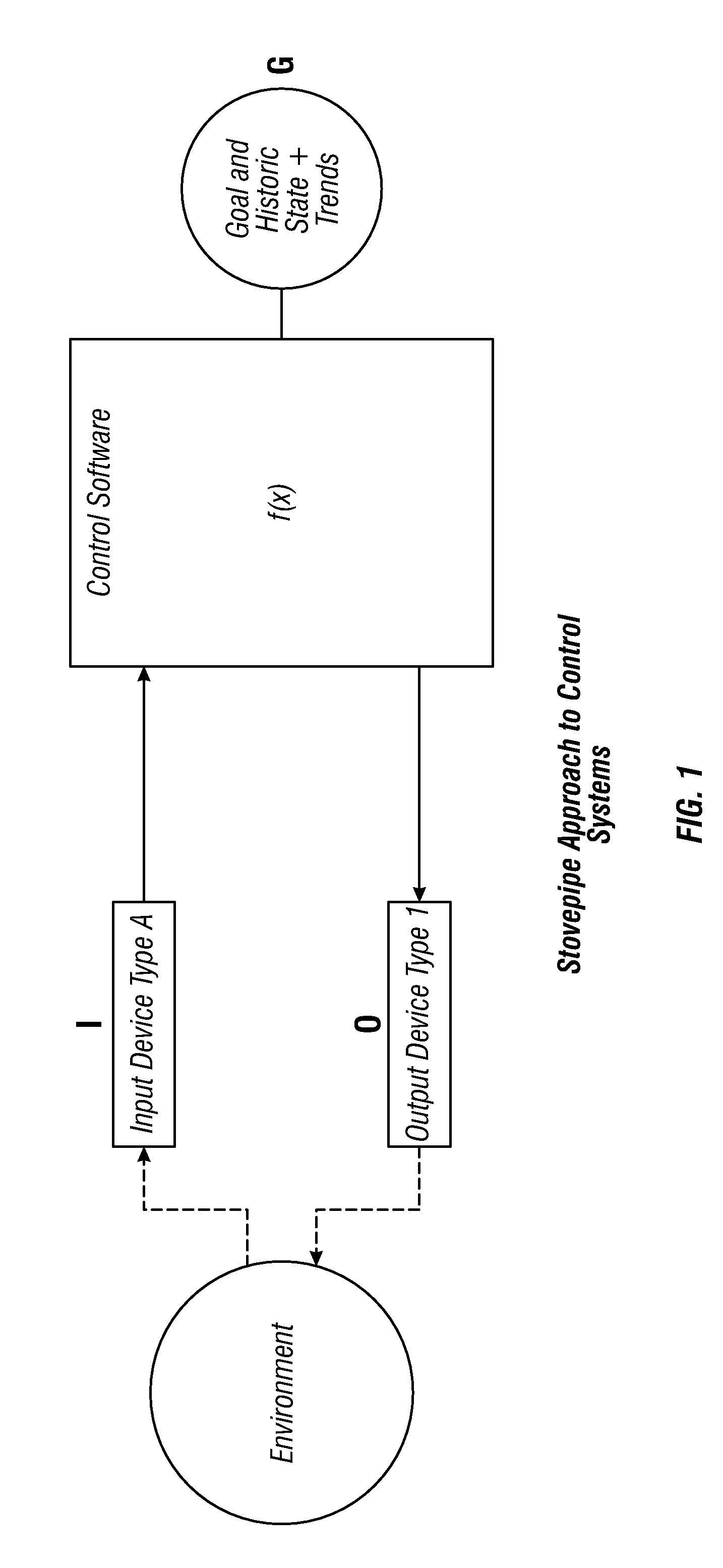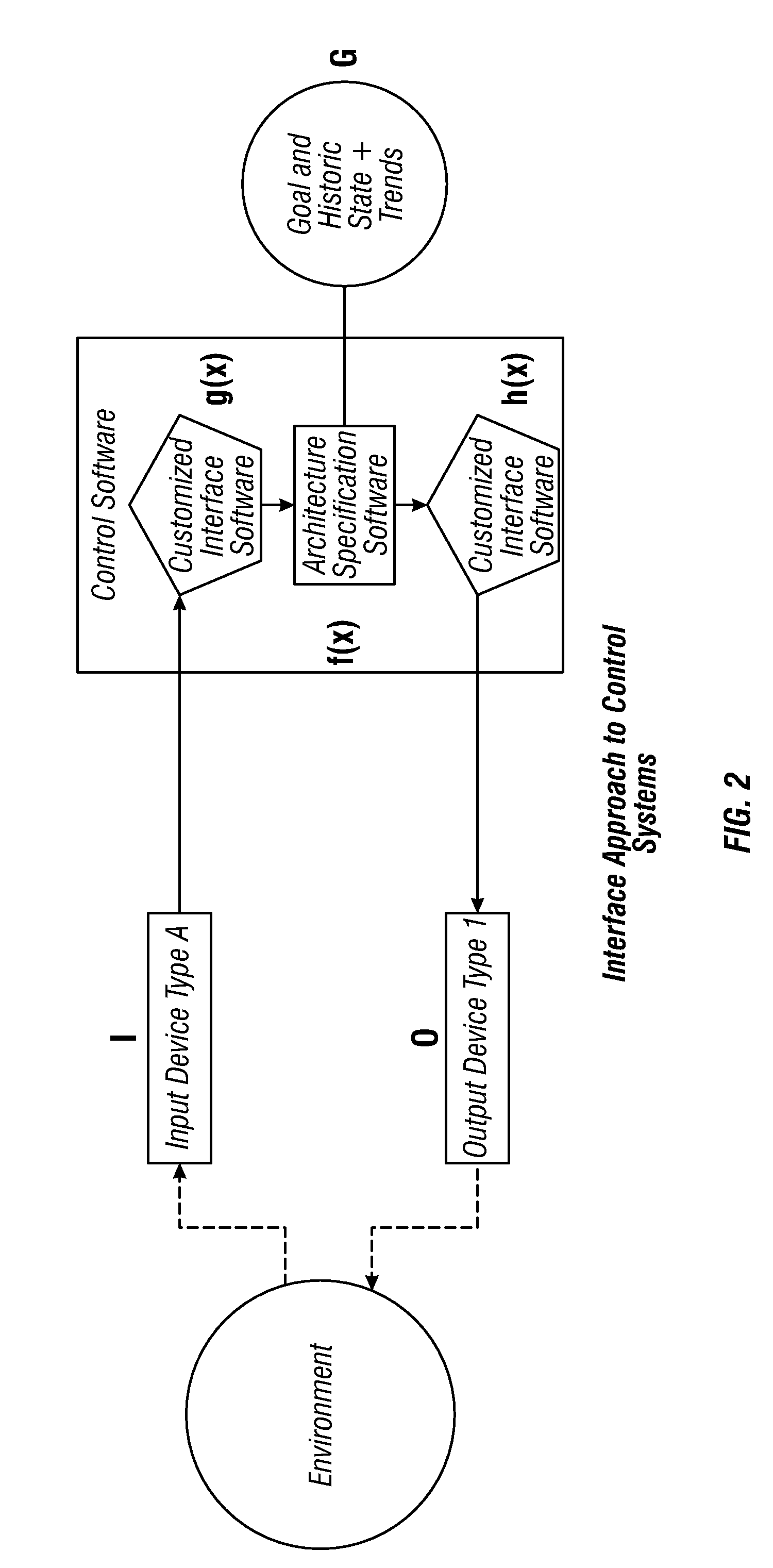Application-independent and component-isolated system and system of systems framework
a technology of application-independent and component-isolated systems and systems, applied in the direction of source code creation, program control, program control, etc., can solve the problems of integration problems, broken backwards-binary compatibility, and the stovepipe approach will not meet the higher-level control requirements of the robotic control system
- Summary
- Abstract
- Description
- Claims
- Application Information
AI Technical Summary
Benefits of technology
Problems solved by technology
Method used
Image
Examples
Embodiment Construction
[0052]Certain example embodiments will now be described with reference to the figures. These example embodiments are intended to illustrate various features and aspects of the disclosed systems and methods and are not intended to limit the scope of the claims.
1. Example DIOS System
[0053]FIG. 3 schematically depicts an approach to abstracting hardware devices from control software, and is provided for comparison with FIG. 4, which schematically illustrates an example robotic control system that has been augmented with an embodiment of an Information Model and embodiments of Hardware Interface Modules (HIMs). As with traditional robotic control systems, the sample system illustrated in FIG. 4 shows that the input devices communicate with the control software and the control software then communicates with the output devices. In the sample system of FIG. 4, as an alternative to employing a customized interface software between each component, an embodiment of the Information Model is u...
PUM
 Login to View More
Login to View More Abstract
Description
Claims
Application Information
 Login to View More
Login to View More - R&D
- Intellectual Property
- Life Sciences
- Materials
- Tech Scout
- Unparalleled Data Quality
- Higher Quality Content
- 60% Fewer Hallucinations
Browse by: Latest US Patents, China's latest patents, Technical Efficacy Thesaurus, Application Domain, Technology Topic, Popular Technical Reports.
© 2025 PatSnap. All rights reserved.Legal|Privacy policy|Modern Slavery Act Transparency Statement|Sitemap|About US| Contact US: help@patsnap.com



